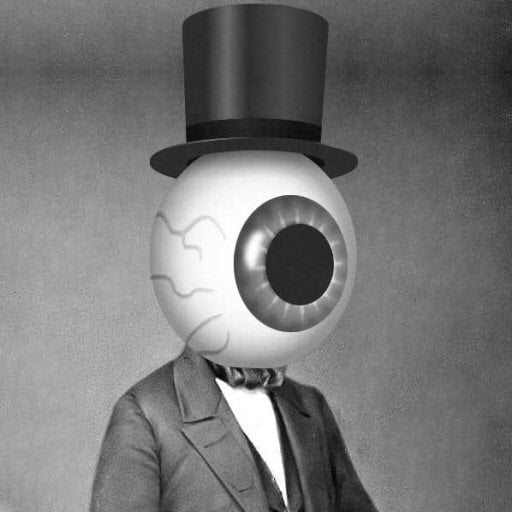It’s equally possible that there was more than one or even a day where only people were born and no one died.
There was a low point where only about 2,000 humans were estimated to be alive. Certainly you couldn’t have had someone dying everyday then
At some point in human history there was only one human, the first one.
*for some definition of “human”
So in my professional opinion I’d say no. I studied anthropology and work in Archaeology.
Evolution just isn’t simply fast enough to do that. It’s a very very slow series of changes. There would never be a point that two homo erectus would have given birth to a modern human. Eventually some populations of homo erectus would change so much genetically and morphologically we would then arbitrarily classify them as human, but it would be on a population scale.
So yeah there was never just 1 human.
Honestly this demonstrates the flaws of how we try to arbitrarily classify species.
Here we stumble again on the flawed definition of a species. It’s not black and white. Biology is a fuzzy mess with no clear borders, so am the fuzzy terms should be treated accordingly.
People love clear boundaries, but biology doesn’t work that way. Everything in biology is incredibly complex, so any rule of thumb comes with huge caveats. Fuzzy concepts like “species” or even “life” are useful—as long as you avoid the grey areas.
The moment you start exploring edge cases, all bets are off, and the warranty on all neat definitions expires. Nothing works neatly with edge cases, so those who wander into the grey area are on their own.
Yes, it very much depends on the definition of Homo sapiens.
There is a strict genetic definition in which a set of defining genes constrain the species, in which case there was likely a first human, but there is every possibility that their first descendents didn’t meet that definition and it took a few generations of back and forthing and natural selection for a consistent line of humans to exist.
On the other hand you could define the species based on social behavior, in which case the “first human” only arose in context of at least one other member of the species, and “Adam and Eve” or “Annie and Eve” or “Adam and Steve” scenario.
Then you go to what most agricultrually minded people think of as a “species”, which is fetile interbreeding. In that case it seems like there never really was a separation between Homo sapiens and Homo erectus and Neanderthals, as there is now broadly accepted evidence of interbreeding long past the “differentiation” of the species, though social and territorial differences seem to have kept them from re-merging into a unified population.
I don’t think they were saying that two cave men banged and out popped Ryan Gosling.
But at some point? The very nature of incremental evolution means that “homo sapiens” was indeed born and, for however brief a moment, there was truly one single “human”.
That said, nobody will EVER be able to figure out when or where that was for obvious reasons. And it truly doesn’t matter since it would still have been raised and live the same as its parents and even its less evolved siblings and so forth. And it probably happened multiple times until there was critical mass to even make a shift from erectus to sapien feasible.
Unfortunately no it does not mean that. At least according to the current science of taphonomy.
Populations evolve, individuals do not. Individuals can have genetic mutations that improve their ability to reproduce which impacts evolution.
Parents of one species cannot give birth to a new species. Sure their offspring may look closer to what we associate with one species or another, but those genetics are held within the parents and greater population. You can have an individual born that appeared strikingly like a modern human, but if their population hasn’t genetically changed enough their offspring go right back to looking just like any other precursor to modern humans.
It’s messy and annoying. People love to have a definitive starting and ending point, but the world just doesn’t work that way. There’s are reason the start of a new species is given as an estimate that ranges tens of thousands to even sometimes hundreds of thousands years.
Although there are lots of ongoing arguments on where we draw these lines because it is arbitrary to a degree. However, there is absolutely no acceptance that parents of one species can give birth to another. That just isn’t evolution.
Now that’s the scientific answer. I think the more philosophical questions around what is human are much more interesting. Where should that line be drawn in our deep past? When is the psyche truly human?
I disagree with science I guess then.
I consider like life and death. I can point at someone alive and I can point at someone dead but in between it gets tricky.
There’s is an exact line between life and death but it’s impossible to really say exactly where that is.
At a certain point you have to call an individual a human. Their parents would therefore not be “human”
We may not know exactly where that line is and that line is probably arbitrary and basically meaningless but there has to be a line where you say “okay that’s a human “
Think of it like language, was there ever Latin speaking parents that gave birth to a French speaking child? No, it’s a gradual change. Or take a color gradient from blue to red there’s a definite change taking place but picking out one specific spot in the middle might be purple
I see what you’re saying and I’m sure science wise it’s technically correct.
Even with your language example… yes a a certain point you have do say “okay that’s French”
Much like the color too. Yes the middle is purple but that doesn’t change the fact that at some point in the gradient it becomes blue.
There the old saying “at what point do grains of rice become a pile of rice”
It’s impossible to say sure, but theirs is a point in my opinion.We draw distinctions for things all the time for other things too.
We have a line where you’re too drunk to drive. A whole movie about people turning a hill into mountain.
100.4 degrees is a fever according to my last hospital visit.
It’s not strange for us to look for “here’s the line”
Again. Nobody is saying there is a definitive starting point of “In the year 0 ICBA, the first homo sapien was born”. There fundamentally cannot be without omnipotence.
But… there was. Or, to be less precise, there were probably multiple definitive starting points before one took hold.
You can have an individual born that appeared strikingly like a modern human, but if their population hasn’t genetically changed enough their offspring go right back to looking just like any other precursor to modern humans.
Yes. The individual was, potentially, “evolved”. But the population “reverted” back. That doesn’t change the fact that there was an individual who had reached the next stage. Because… a mutation/defect is isolated until it isn’t.
But for the purposes of a thought experiment/“shower thought”? Yeah, there was very much a point where a single human existed. We just will never know beyond “it probably happened in this very large span of time”.
Which is actually how most science works. You cannot ever know what the first molecule in a rockslide to start moving was (without, again, omnipotence). But you can decrease the granularity and understand what the first rock to fall or even what part of the rock tipped over first and so forth.
For all scientific and “meaningful” purposes? That is sufficient and it is just not worth even discussing which molecule “started it”.
For the purposes of philosophy and thought experiments? There was very much a first molecule. It just doesn’t matter outside of that domain.
Unfortunately that’s still not quite right.
The individual was, potentially, “evolved”. But the population “reverted” back.
Individuals cannot evolve, but more importantly there is no “reverting back” evolution moves in one direction. It’s the slow slow change in the genetics of an entire population.
Additionally, rocks slides and evolution are not really comparable. As you said only one rock needs to fall to cause an event that has a definitive start and end. Evolution is an ongoing proccess that never ends and it is infinitely more complex than a rock slide. The issue is we as humans are attempting to categorize an ongoing never ending proccess.
I mean, that’s just a theory.
A film theory?
No one of those ones where there’s no empirical evidence at all so we’re gonna all agree to an educated guess.
There was a low point where only about 2,000 humans were estimated to be alive. Certainly you couldn’t have had someone dying everyday then
If an equal number or greater of people are also being born every day, you could.
The math does several limit the possible number of births. Only about 1,000 of those people would have been female and even if we’re generous and assume 80% were of child bearing age that gives you 800 women that could have children.
That’s going to be an incredibly low birth rate and it’s very unlikely each woman would be having a child each year.
It would be interesting to have such a statistic. Perhaps there was such a day more recently than we think.
Today’s not that day though. https://www.worldometers.info/
If there was at least one, it also means there was a last day prior to today where no humans died, that went unnoticed and unremarked, and probably will be the last for a long time yet.
The human population would have to be in the tens of thousands for that to be likely, and I’m not sure it was ever so low unless we’re arguing about technicalities regarding who counts as human during the process of evolution.
This is a statistic problem. It is likely to occur at least once per year with a population below 250,000.
Age is distributed and we’re only looking for one day, with a day being no well defined so we have to assume any given 24 hour period.
If it was under 10,000 there could be entire weeks without a single death.
This is based on the chance of any random person dying being 1:50,000.
This is today’s rate and in the past most people died young but the chance of it occurring does not require the population be lower than that chance of a random person dying because we’re looking for any day not a specific day.
You’re right in general, but 1:50,000 implies an average lifespan of 137 years, unless I’m missing something. I think 1:15,000 is a more reasonable estimate.
70,000 BCE humans nearly went extinct apparently. Some think less than 1300 individuals at the lowest.
Yes, humanity was very close to extinction and sub 10,000 in population at one point. We can tell from mitochondrial DNA.
We can tell from mitochondrial DNA.
Damn, what a powerhouse.
https://www.science.org/doi/10.1126/science.abq7487
It’s been significantly lower than 10,000 at least once in history.
Unfortunately there’s a paywall to the article but the free abstract gives you the critical information. And this is among some of the most up to date research on the topic
There’s other recent research that counters this idea. It’s still uncertain. Humans have dipped low before, just probably not levels rivals animals like the cheetah, otherwise we’d show the same genetic issues they have due to the inbreeding of the survivors.
I don’t have a reference to it at the moment, so it’s a “trust me” scenario, but what I found then was through googling (because I used to be convinced of the bottleneck), so it’s out there.
From my understanding of the subject the current consensus is the bottleneck did happen. There’s been fluctuations in the exact number, but under 5,000 is what is most widely supported by the evidence.
The only debate I’m aware of is the exact timing and cause of the bottle neck. It was widely believed a volcano eruption was responsible, but that has become more discredited. It appears the population decline occurred before the eruption and took a significant amount of time to climb after the eruption.
If I recall right (and it may not be right lol) it was timing as well as how many other populations there were. I think the initial discovery and research made some assumptions that what they found was the only people around and that it was a sudden disaster. Just like now we think that the dinosaurs were already suffering for various reasons and the asteroid was just a final push towards extinction over time.
I read the full paper and I’m not qualified to evaluate the validity of the model being proposed but I find the idea that the population was
about 1000 individuals, which persisted for about 100,000 years
rather implausible. Implausible things sometimes turn out to be true but models frequently turn out to be wrong so if I were to bet, I would bet on the latter.
Plus, for the purpose of the OP, I think neanderthals and other close relatives of modern humans should count as people even if they have no living descendants.
Cuz we’ll be extinct by then?
Nope, just a day where there were people alive and no one died.
It’s really only possible once the population gets lower. So it could also be possible in the future too








